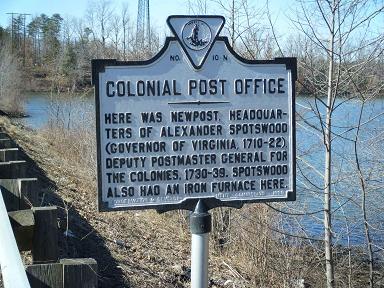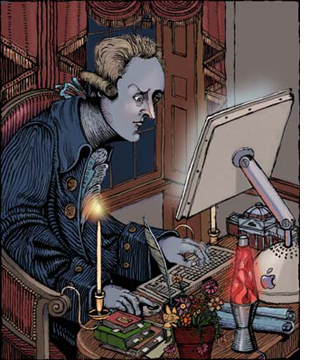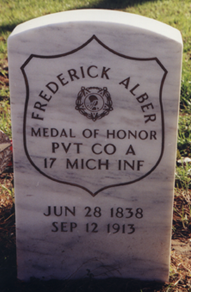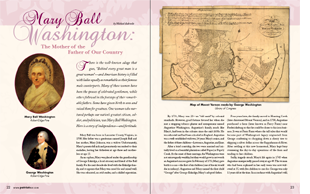All about the Benjamins
UPDATE 5/6: Stay tuned for a feature-length version of this post in an upcoming issue of Patriots of the American Revolution magazine.
Even if you’re not a student of the Founding Fathers, chances are they are always with you. From George Washington, to Thomas Jefferson and Alexander Hamilton, their faces are more than likely tucked away in your wallet, printed on our nation’s currency. Most American monies feature former presidents, but two dollar bills, the $10 and $100, depict non-presidents who made an equal impact the nation’s history.
The one-hundred-dollar bill features the country’s most treasured statesman Benjamin Franklin. Perhaps no other American’s portrait is more deserving of this honor as the immense list of contributions that he left us with would fill a small library (another one of his ideas). Franklin’s was the first bill to feature a non-commander-and-chief and it is commonly referred to in slang as a “Benjamin.” According to the Bureau of Engraving and Printing at the U.S. Department of the Treasury, the average life of a $100 bill in circulation is 89 months before it is replaced due to wear. Approximately 7% of all notes produced today are $100 bills.
The irony is that Ben Franklin himself was one of the original proponents and printers of paper currency and in 1729 he wrote, “There is a certain proportionate Quantity of Money requisite to carry on the Trade of a Country freely and currently; More than which would be of no Advantage in Trade, and Less, if much less, exceedingly detrimental to it.” It is also peculiar that his likeness adorns the highest denomination of commonly circulated bills when compared to the lesser-valued ones featuring his presidential counterparts.
The very first $100 denomination, issued in 1862, did not feature any portrait in favor of a bald eagle. In 1869 a new version was issued with Abraham Lincoln’s likeness. In 1914 the first $100 Federal Reserve Note was issued with a portrait of Benjamin Franklin of which we are familiar with today. Under the series of new printings in 1928, all U.S. currency was changed to its current size and began to carry a standardized design. From then on, all variations of the $100 bill would carry the same portrait of Benjamin Franklin. Since Series 1928, the $100 note has also featured an engraving of Independence Hall in Philadelphia on the reverse-side. The former State House of Pennsylvania, Independence Hall is often called the birthplace of our Nation and has strong ties to Franklin’s legacy.
In the 1990’s, new-age anti-counterfeiting measures were implemented with microscopic printing added around Franklin’s portrait and a metallic security strip on the left side of the bill. A completely redesigned, state-of-the-art Series 2009 $100 bill was unveiled on April 21, 2010 and will be issued to the public on February 10, 2011. Like the country that honors him, Franklin’s bill has gone through several evolutions and he has also been featured on special limited edition gold coins and bank notes.
From top, down: 1914 Series, 1966 Series, 2003 Series, 2010 Series.
Signs of the times

I live in Fredericksburg, Virginia, southern Spotsylvania County to be exact. There are dozens of roadside Historical Markers in the area with many more reaching out in all directions. The vast majority of these signs are related to the Civil War, but if you look carefully, you can find markers acknowledging the Colonial-era. Unfortunately, they tend to be quite obscure and in places that you would never think of going. I find this rather disappointing and have always felt that the region neglects far too much of its earliest history. These roadside markers provide a great opportunity to remind visitors that Fredericksburg had a life and legacy before 1862.
One marker that I pass every morning is the E 46 Colonial Fort sign. Erected in 2004 by Department of Historic Resources, it is located on Tidewater Trail (Virginia Route 2) 1.1 miles east of Lansdowne Road, on the right when traveling east. (It is also a few hundred yards up the road from the site of the Slaughter Pen.) The marker reads:
The Virginia General Assembly authorized the construction of a fort built nearby along the Rappahannock River in 1676. It served as a defensive fortification for settlers of European descent on the frontier when periodic conflicts occurred between Virginia Indians and settlers. Maj. Lawrence Smith commanded the fort. Smith had patented 6,300 acres of property with Robert Taliaferro in the region in 1666. Smith later obtained more land nearby. The fort was abandoned about 1682, when the General Assembly ordered the dismantling of many of these structures.
A short distance away is a much older marker titled N-10 Colonial Post Office. Erected in 1928 by the Conservation & Development Commission, this sign is also located on Tidewater Trail (Virginia Route 2) 0.6 miles east of Jim Morris Road (County Route 609), on the left when traveling east. It states:
Here was Newpost, headquarters of Alexander Spotswood (Governor of Virginia, 1710-22), Deputy Postmaster General for the colonies, 1730-39. Spotswood also had an iron furnace here.
Ironically, this region is still quite rural when compared to the surrounding county. The post office sign stands near Ruffin's Pond and the fort marker is adjacent to a cornfield. I plan to do some additional research into these two sites and will share my findings. I also invite anyone who may be familiar with these markers, or the history behind them, to comment below. Perhaps we can collectively add to their story.
(Image Source: HMdb.org)
Preparing to prepare
 Yesterday I received an email from Ms. Anna Berkes, who is the research librarian at the Jefferson Library. According to her bio on the library’s blog she “Answers reference questions, buys books, and trawls through professional literature.” She has already provided a tremendous service by identifying reference materials for my new book project Faith and Freedom in Fredericksburg: Thomas Jefferson and the Virginia Statute of Religious Freedom (Copyright 2010).
Yesterday I received an email from Ms. Anna Berkes, who is the research librarian at the Jefferson Library. According to her bio on the library’s blog she “Answers reference questions, buys books, and trawls through professional literature.” She has already provided a tremendous service by identifying reference materials for my new book project Faith and Freedom in Fredericksburg: Thomas Jefferson and the Virginia Statute of Religious Freedom (Copyright 2010).
A few weeks ago I contacted the good folks at the TJ Foundation to inquire about obtaining primary sources. Ms. Berkes graciously offered to assist and provided me with a list of essentials. Thanks to her invitation, I will be traveling to Charlottesville over the summer to browse their archives and study documents from their collection. They also have the largest catalog of secondary sources on Thomas Jefferson in the country. As Monticello is my “Disneyland” you can only imagine what a thrill this is.
By Anna’s recommendation we were able to identify a number of recordings on Jefferson’s time here in Fredericksburg (specifically in 1777) including Jefferson's Memorandum Books: Accounts, with Legal Records and Miscellany, 1767-1826, as well as misc. selections from the Papers of Thomas Jefferson. The Thomas Jefferson Encyclopedia that is available online via the Monticello website is also a great source of information.
Locally, I am blessed to have the assistance of Barbara Willis, Jeffrey Edmunds and Nancy Moore at the Central Rappahannock Regional Library and fellow historians Marian McCabe and "Skip" Nolan. They have already provided me with copies of newspapers and articles from publications like The Freedom Record and the Thomas Jefferson Institute Quarterly and are obtaining more references for me from the University of Mary Washington and the College of William and Mary.
Every January there is a multi-denominational observance here in Fredericksburg recognizing the Statute. It is held on Washington Ave where a modest monument to Jefferson’s act stands. Apparently the sponsor of this celebration is a Masonic organization called the Sojourners. I am hoping to get in touch with them as well.
With this many people guiding me, I can’t possibly go wrong.
My greatest pleasure as a historian has always been found in the research process. Writing and editing is simply the conclusion to the journey. I have even lectured on historical research and writing to groups like the Kappa Delta Gamma Sorority (Beta Eta Chapter) and the Pittsburgh Writer’s Group (Read Transcript).
I admit that research can be boring, and painful, and frustrating at times, but there is nothing more gratifying than digging through a dusty archive and uncovering something that hasn’t seen the light of day in years. To quote Carl Sagan “Somewhere, something incredible is waiting to be known.”
By focusing on this aspect, the scholarly phase of historical study, it has enabled me to grow both personally and professionally. In fact, if you read my first few books, versus my last two, you will note a significant difference in what I write about - and how I write it. Frankly, I have matured.
I can hardly wait to get started and to think that I will be in the presence of papers that were penned by Jefferson’s own hand (under the supervision of staff of course) will make this process that much more memorable. I have extensive experience examining relics and historical documents, but to see Jefferson’s personal correspondence in person would be something very special.
I’ve outlined a general framework for the manuscript and casually time-lined a schedule that would have me ready for submission to the publisher sometime in mid-late 2012. It may take longer. As I stated in my announcement, this book will be the most challenging, ambitious, and scholarly work of mine to date.
I am in no hurry as this will be my 7th, and perhaps final title. With the exception of penning the occasional article for Patriots of the American Revolution or The Free Lance-Star (…and blog posts of course), my sole writing focus will be on this project. Stay tuned as I hope to share plenty of insights and updates along the way.
PS. Read the formal announcement on this upcoming title.
ABOVE: Artwork by Robert Meganck titled Thomas Jefferson’s Favorite Web Sites.
Honoring a Hero
As you may have guessed from the sudden decline in posts, I have been quite busy over the last two weeks trying to complete my to-do list in anticipation of researching materials for my next book on Thomas Jefferson and the Virginia Statute of Religious Freedom (details here). Last week I did an interview for my hometown’s newspaper The Pittsburgh Post-Gazette, and completed my 40-minute banquet address on Jackson’s 1862 Shenandoah Valley Campaign that I will be delivering in Lexington next month. That talk will also be video-taped and posted online on my Vimeo page. I am also busy re-writing some last minute voice-over narration and preparing for the test-screening of our documentary on Richard Kirkland. As I stated in a recent post, no matter how much I focus my energies on the Revolution, I just can’t seem to get away from the Civil War. Yesterday my first in a series of local ancestor-articles ran in The Free Lance-Star. Enjoy:
 Honoring a Medal of Honor Winner
Honoring a Medal of Honor Winner
Spotsylvania veteran unseen, but not forgotten.
(By Michael Aubrecht, FLS, 5/22/2010. VIEW PDF)
Considered to be the most prestigious decoration bestowed upon members of America's armed forces, the Congressional Medal of Honor is given to those soldiers who distinguish themselves, "above and beyond the call of duty while engaged in an action against an enemy of the United States."
Initially christened the U.S. Army Medal of Honor, this citation was first authorized by a joint resolution of Congress on July 12, 1862 in the midst of the War Between the States. As a result 1,522 military men who participated in that conflict received them. To date, 3,447 men and one woman have been awarded the medal, many posthumously.
One recipient with ties to the local area was Private Frederick Alber, who was awarded his Medal of Honor for valor in action. Alber was a German immigrant and member of Company A of the 17th Michigan Volunteer Infantry. He was recognized for saving an officer on May 12, 1864 during the Battle of Spotsylvania.
His citation reads: "Bravely rescued Lt. Charles H. Todd of his regiment who had been captured by a party of Confederates by shooting down one, knocking over another with the butt of his musket, and taking them both prisoners."
The life and legacy of Frederick Alber is a rather remarkable one. Despite being heavily examined by historical societies and re-enactment groups, no photograph of the man has yet been discovered. This dilemma is quite common when researching soldiers who were killed in action during the Civil War, as photography was just coming into vogue, but Alber lived until September 12, 1913.
His moment of gallantry came during one of the most grueling engagements of the Civil War. Immediately following the bloody stalemate at The Wilderness, the Battle of Spotsylvania erupted and lasted from May 8th through May 21st of 1864. This desperate and ferocious encounter, at sites with names like "The Bloody Angle," resulted in more than 30,000 casualties.
Also referred to as "Spotsylvania Courthouse," this battle is considered to be part of General Ulysses S. Grant's Overland Campaign and pitted the brash commander's Army of the Potomac against General Robert E. Lee's Army of Northern Virginia. Lee's troops had been tremendously successful in defending the Old Dominion in previous years, but were terribly lacking in supplies and starting to show their diminishing numbers.
It seems fitting that Frederick Alber became a soldier, as he had to protect his own family at a very early age. After his parents emigrated from Germany to the United States in 1847, they settled on a farm in Lodi Township in Michigan. The Albers appeared to be living out the "American Dream" when, in July of 1849, the family was dealt a terrible blow. Both of Frederick's parents and a brother contracted cholera and died shortly thereafter. As a result, he was left with the responsibility of caring for his brother and sister. They remained on the family farm and worked the land as their father had intended.
Frederick Alber was 24 years old when he enlisted in the 17th Michigan Infantry on July 2, 1862, and went off to fight for the Union. His regiment participated in at least nine major engagements including the battles of Antietam, Fredericksburg, Vicksburg, Cold Harbor and Petersburg.
The 17th Volunteers earned the tenacious nickname of the "Stonewall Regiment" following their inaugural fight on South Mountain. Not to be confused with their adversary's equally regarded "Stonewall Brigade," which was commanded by General Thomas J. Jackson, the Federal "Stonewallers" boasted eight Medal of Honor recipients.
In rescuing his superior at Spotsylvania, Alber stood out in the minds of those who had witnessed his courage. The story of his bravery circulated and on February 21, 1865, Major General John G. Parke formally recommended him for the Medal of Honor.
He wrote, "In addition to his undaunted bravery, exhibited in the Wilderness rescued, at Spottsylvania, May 12 (1864), Liet. (Charles) Todd, of the 17th, who was in the hands of a party of rebels, shooting down one, knocking over another with the butt of his musket and taking the captors of Lieut. Todd as prisoners, conducted them both to the rear."
The resulting award was finally issued on July 30, 1896, some 32 years after the Battle of Spotsylvania. Most historians today believe that the medal was simply mailed to Alber, as there is no mention of it in the local papers. There was no ceremony, no formal presentation, and no celebration. As the recipient has no surviving likeness on record, it seems understandable that the event was devoid of public fanfare.
Later that year Alber's first wife died. Over the course of the next six years, all of his siblings passed away, leaving him as the sole family immigrant in America. In December of 1904, he remarried, but due to his advanced years, the rapidly aging German was forced to sell the farm. In 1913 he passed away at the age of 75. Upon his death, the world lost his images, impressions and his firsthand memory of the Civil War.
That however is not the end of this humble soldier's story. Thanks to his descendents hailing from Michigan to Virginia, the legacy of Frederick Alber has been passed on from one generation to another.
In November of 1999, Oregon Township dedicated a new headstone to honor the veteran in the local cemetery. At the unveiling ceremony, a chaplain from the Sons of Union Veterans stated, "It seems well we should leave Comrade Frederick Alber to rest in honor where over him will bend the arching sky, as it did in great love when he pitched his tent, or lay down weary and footsore, by the way or on the battlefield for an hour's sleep."
The U.S. Senate also took a moment during their Proceedings and Debates of the 106th Congress, First Session to pause and recognize the event, reading aloud a declaration titled "Tribute to Civil War Hero Frederick Alber." Finally, in spite of the absence of a photograph or recorded image, a proud but humble man received well-deserved recognition, at an extraordinary level, for his remarkable and noteworthy contribution.
This month our area acknowledges the anniversary of the battles of Chancellorsville (Apr. 30-May 6 1863), The Wildreness (May 5-7, 1864), and Spotsylvania (May 8-21, 1864). As we reflect on the life of Private Alber, let us remember ALL of the honorable men who fought here, those in blue - and in gray.
The author would like to thank Barbara Franklin, the great-great granddaughter of Frederick Alber, as well as her husband Jess Franklin, for introducing him to their ancestor and his extraordinary tale of valor. Photo: Frederick Alber’s grave at Oregon Township Cemetery in Michigan. (Photo courtesy of Barbara and Jess Franklin).
PS: For all things related to the Civil War and Michigan, visit John Dempsey’s outstanding blog.







 The good folks at
The good folks at  Yesterday I received an email from Ms. Anna Berkes, who is the research librarian at
Yesterday I received an email from Ms. Anna Berkes, who is the research librarian at  Honoring a Medal of Honor Winner
Honoring a Medal of Honor Winner